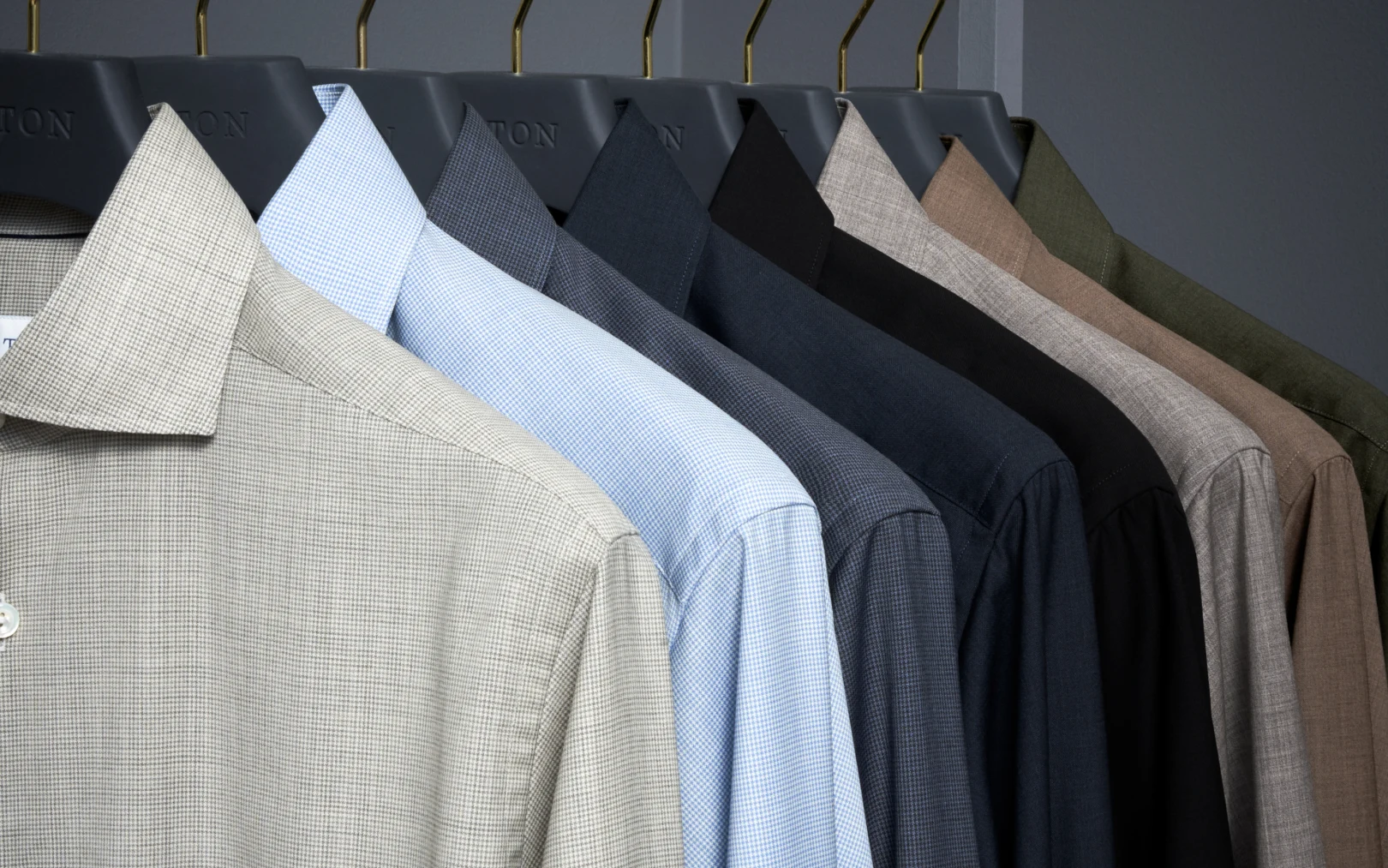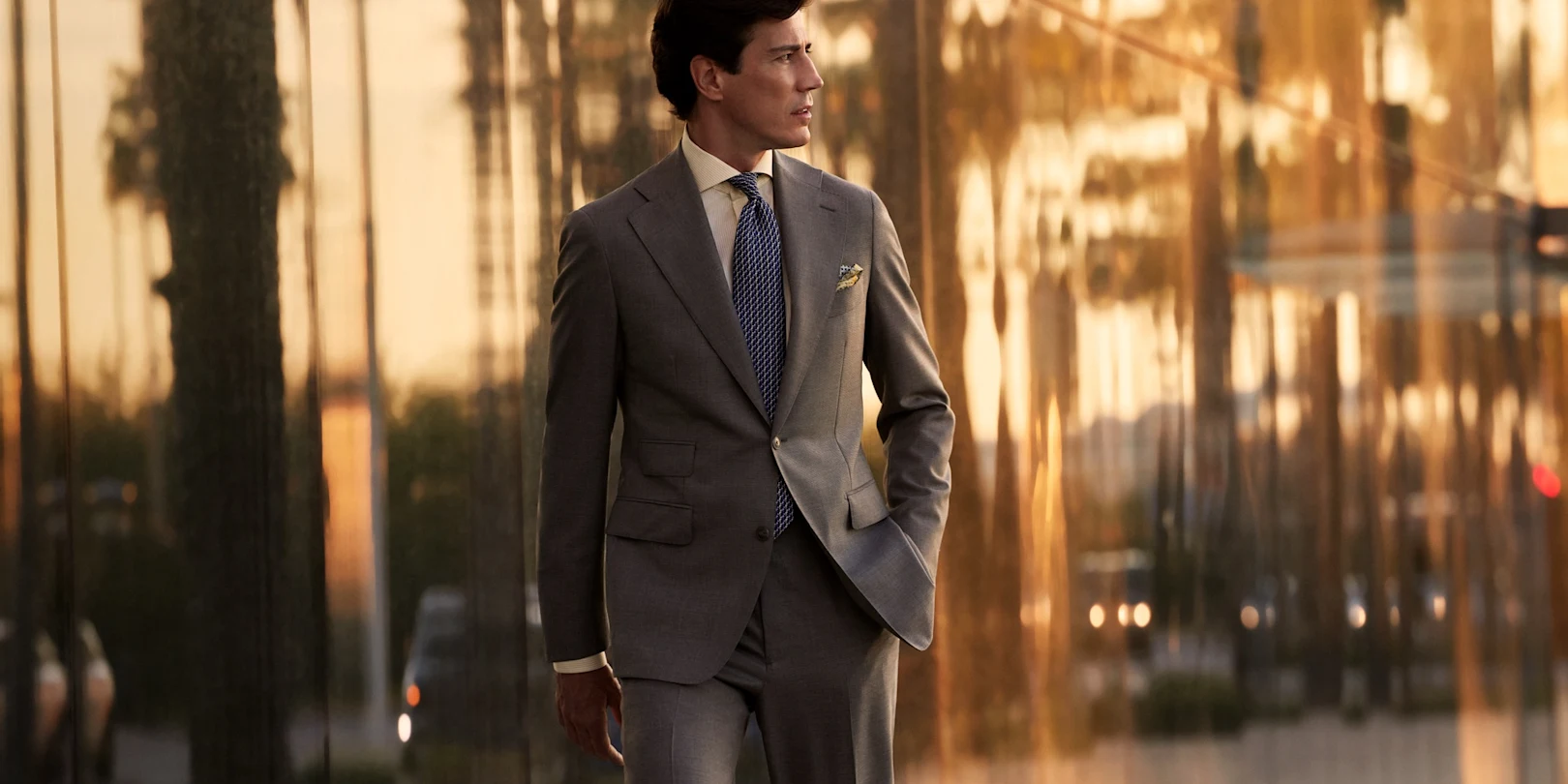
Så matchar du skjorta med slips
Stilguide
By: Jonathan Ulenius • 7 min”Är slipsar i mode?”
”Är slipsar i mode?” Denna fråga, ställd av Imran Amed, grundare och vd för den inflytelserika nyhetssajten Business of Fashion, dök upp i hans nyhetsbrev efter att ha observerat många slipsar på och runt Milanos modeveckas landningsbanor.
Även om slipsen, som Amed också drar slutsatsen, antagligen aldrig kommer tillbaka som ett spritt – ordvitsigt – plagg för dagligt bruk av allmänheten är det ändå ett utmärkt sätt att ge din look lite individualitet. Eller, som mr Amed elegant uttrycker det, ”det är faktiskt ganska punkigt att bara bära slips avslappnat nuförtiden.”
Om det var ett tag sedan du samordnade skjorta och slips och behöver en uppfräschning eller helt enkelt vill lära dig att knyta en slips har vår Creative Lead, Richard Andersson, några utmärkta tips för dig.
Förstå färg och mönster
När man matchar skjortor med slipsar bör man i första hand tänka på färgen. Vi föredrar en helhet som bär ett enande tema – ofta kallat den röda tråden – genom hela färgskalan. I det här exemplet har vi kombinerat flera mönster, vilket gör det viktigt att begränsa paletten till två eller tre färger, till exempel blått och vitt. Om du använder fler färger med dessa olika mönster kan det få en överväldigande effekt. Genom att bara hålla sig till två färger förblir den röda tråden synlig och skapar sammanhållning, trots mångfalden av mönster.
En viktig faktor när man stylar olika mönster är deras mönster. I vårt exempel har vi valt en skjorta med ett litet hundtandsmönster och en slips med en större medaljongmönster. Vi har kompletterat med en näsduk i blått och vitt som har ett ännu större paisleymönster. Slutligen knyter den kritstrecksrandiga kostymen ihop ensemblen och skapar en harmonisk mönsterbalans.
Det som binder ihop looken är att bibehålla två till tre färger i paletten, i linje med principen. Sedan är det fritt fram att experimentera med mönster. Se till att du använder varierande mönster. En slips med samma mönsterskala som skjortan skulle till exempel smälta in för mycket, medan en annan skala gör att den sticker ut. Slipsen syns!
Arbeta med texturer
Nästa sak att tänka på – och lika viktigt som färger och mönster – är textur.
Denna kombination kan framstå som nedtonad när den stylas enfärgat, men en närmare titt avslöjar en rutig skjorta med en tredimensionell textur som matchar en grenadinslips. Dessa texturer skapar en spännande look. Komplettera skjortan med en tyngre Herringbone-kavaj i ytterligare ett lager, för en stilren och dynamisk helhet i texturen.
Rätt slips för rätt tillfälle
När du väljer skjorta och slips är tillfället viktigt och det är viktigt att se till att din outfit passar tillställningen du ska på. Här är några grundläggande riktlinjer:
-
Välj en enfärgad skjorta tillsammans med en konservativ slips för formella tillställningar som bröllop eller anställningsintervjuer
-
För en avslappnad tillställning, som en utekväll med vännerna, kan du gärna ha lite roligare med ditt slipsval. En vanlig fråga vi stöter på är: ”Kan jag bära slips med denim?” och svaret är definitivt ja. Nyckeln är att välja rätt slips. En tyngre textur, som en stickad slips, fungerar bra. Ränder kompletterar denim extra bra, både horisontellt och på en klassisk flanellslips med diagonala ränder.
-
Kom ihåg dessa tips när du återintegrerar slipsar i din moderepertoar.










